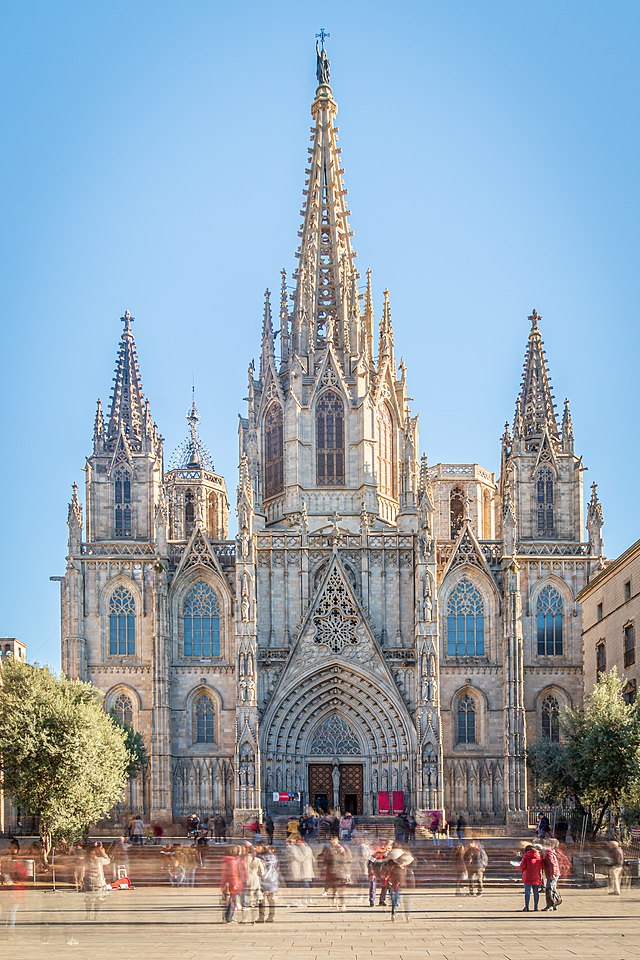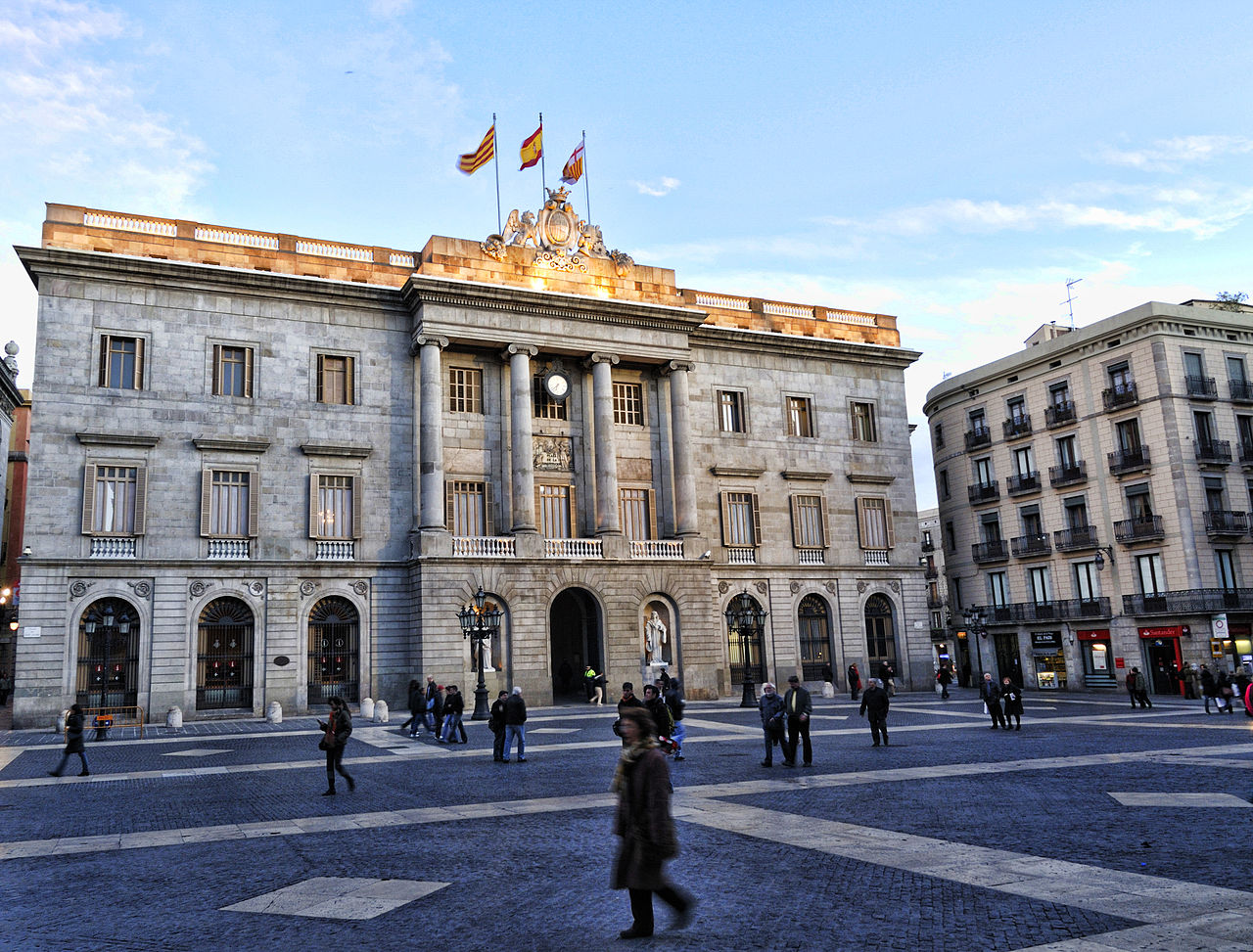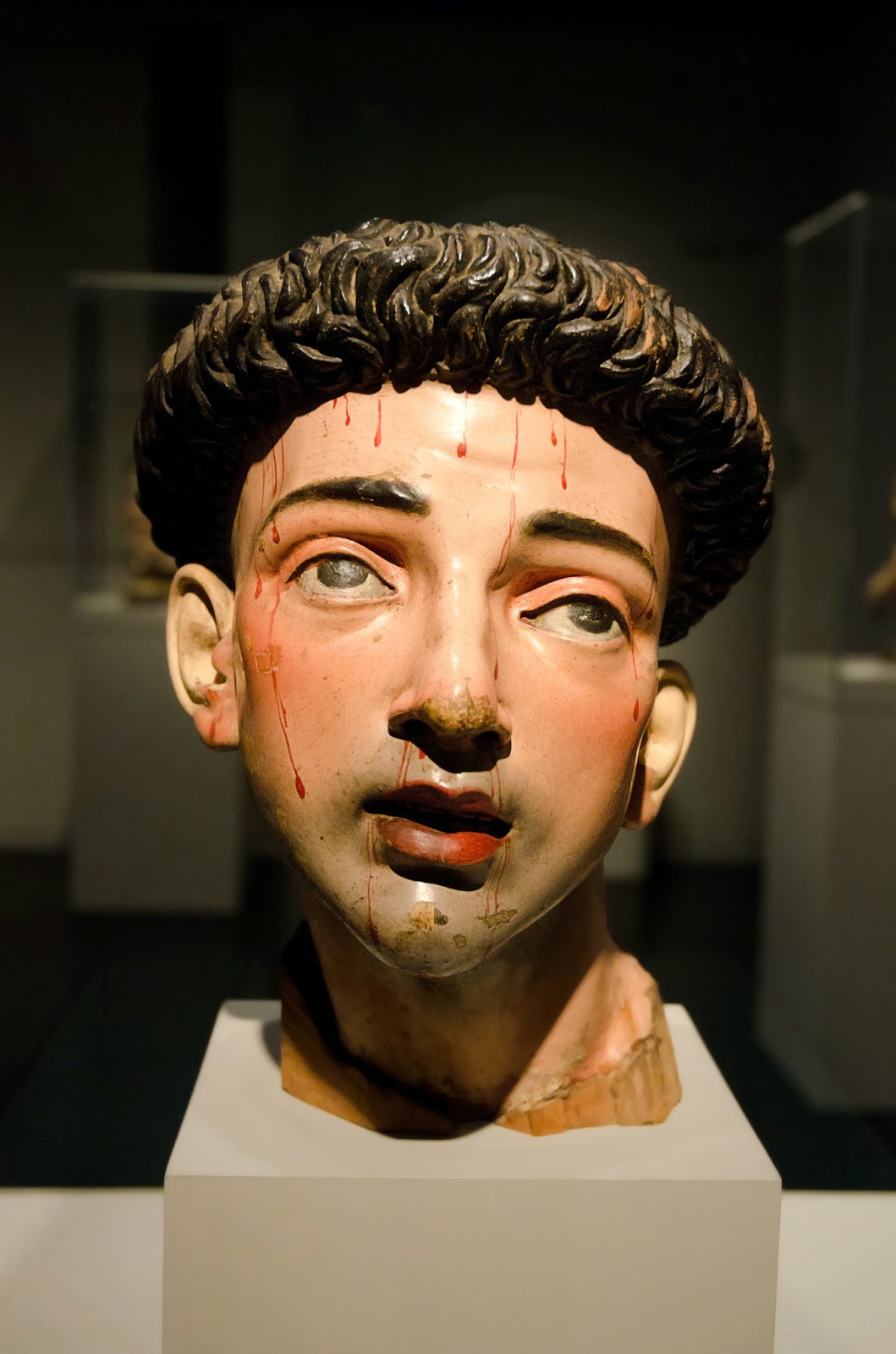In this comprehensive guide, we’ll cover insider tips from pro photographers to help elevate your skills for taking travel photos in Barcelona.
Planning Your Barcelona Photo Shoot Locations
The key to a successful Barcelona photo trip starts with planning where and when to shoot:
1. Look Up Photogenic Landmarks
Research Barcelona’s main architectural and landmark photography spots like La Sagrada Familia, Park Güell and the Gothic Quarter. Studying images of these locations will spark ideas and reveal the best angles.
2. Dig Into Neighborhood Gems
Look beyond the main tourist sites to Barcelona's unique neighborhoods. Areas like Gràcia, Born and Poblenou have small curated plazas, street art and shops that tell the local story.
3. Study Lighting Conditions
Consider the changing daylight and colors in Barcelona across seasons and times of day. Early morning and late afternoon often have the most dramatic light.
4. Account for Weather and Events
Plan for how weather and events may alter your locations. A rainy day in Park Güell will have a very different vibe from a sunny one. Festivals like La Mercè also offer unique photo ops.
5. Mix Famous Sites with Local Life
Blend major landmarks with local culture by exploring offbeat areas like the Raval neighborhood. This allows capturing a true Barcelona experience.
By scouting locations thoughtfully, you’ll discover amazing photography spots away from the crowds.
Packing the Essential Photography Gear
Carrying lightweight photography gear while traveling is key:
1. DSLR or Mirrorless Camera
A DSLR or mirrorless camera allows full creative control and interchangeable lenses for quality images. Consider weather sealing if shooting outdoors extensively.
2. Wide Angle and Zoom Lenses
Pack a wide angle like 18-35mm to capture expansive city scenes along with a 70-200mm zoom to isolate architectural details.
3. Tripod or Monopod
A tripod or monopod keeps cameras steady, especially for low light shots. Look for a lightweight, collapsible option.
4. Remote Shutter Release
To avoid blurry shots, a remote shutter release allows triggering the camera without touching it. Essential for long exposures.
5. Spare Batteries and Storage Cards
Carry extra charged batteries and high capacity memory cards to shoot all day without worrying about missing a shot.
The right minimalist kit tailored to your style will let you travel light while having full shooting flexibility.
Tips for Photographing Top Barcelona Landmarks
Barcelona’s iconic landmarks from La Sagrada Familia to Casa Milà demand unique photographic approaches to capture their grandeur:
1. Shoot La Sagrada Familia Exteriors at Golden Hour
The dizzying exterior of the UNESCO-listed basilica comes alive during the warm light at sunrise or sunset. Capture its texture from multiple angles.
2. Compose Wide Shots of Park Güell
Use a wide lens to emphasize the sprawling scale of Park Güell’s architecture along with the city views beyond. Position yourself on higher ground like the viaduct.
3. Photograph Casa Milà’s Organic Shapes
Highlights of the Gaudí masterpiece include the rippling stone facade and mushroom-esque chimneys. Move around for abstract geometric compositions.
4. Seek Reflections Along Montjuïc Magic Fountain
The Magic Fountain's water acrobatics provide fantastic reflections with Barcelona as a backdrop. Use slow shutter speeds to capture motion.
Each iconic site has sweet spots for composition and lighting. Visualize your desired photos before visiting to maximize your time there.
Getting Creative With Barcelona Architecture and Street Photography
Beyond the main sights, Barcelona’s streets are filled with captivating photographic possibilities:
1. Photograph La Rambla Eclectic Street Life
Capture a mix of street performers, flower stalls and architectural details along the storied La Rambla promenade. Convey both bustle and beauty.
2. Compose Surreal Architecture in Park Güell
The curving architecture along with colorful mosaics make for striking photos. Convert to black and white or boost color saturation to add an otherworldly effect.
3. Capture Quirky Barcelona Street Art
Barcelona’s street art scene provides endless opportunities for eye-catching photographs. Capture wall murals in full along with details.
4. Frame Intriguing Street Photography Moments
Keep your eyes open for candid moments like an abuelita hanging laundry or children playing soccer. Capture authentic local life.
Look for unique ways to portray familiar Barcelona scenes. Push your creativity by playing with lighting, angles, colors and composition.
Essential Techniques for Better Barcelona Travel Photos
Equipped with versatile photography skills, you can transform Barcelona’s sights into spectacular images:
1. Master Exposure and Focus
Learn exposure triangle fundamentals of aperture, shutter speed and ISO and techniques like bracketing to optimize exposure. Use hyperfocal distance and manual focus for tack sharp architecture shots.
2. Shoot During Golden Hour
The soft, warm light around sunrise and sunset flatters almost any subject. Time your sessions around golden hour for magical photos in Barcelona.
3. Utilize Leading Lines and Symmetry
Incorporate leading lines via roads or railings to draw the eye into images. Seek interesting symmetry among architectural patterns.
4. Learn Post-Processing Essentials
Post-processing allows polished images from improving tone, contrast and sharpness to cropping for better composition. Invest time into honing editing skills.
Elevate your images from tourist snaps to gallery-worthy shots with these essential photography skills.
Finding Inspiring Locations Off the Beaten Path
Venturing beyond Barcelona's core sights reveals underrated neighborhoods with stories to tell:
1. Discover Hidden Plaça del Sol
This overlooked square within Gràcia exudes vintage charm with its central fountain and surrounding cafés. A hidden gem.
2. Marvel at Castellers Human Towers
Castellers practice awe-inspiring human towers on weekends in local plazas. A unique Barcelona tradition.
3. Wander Through Former Factory Poblenou
Once an industrial hub, Poblenou is now filled with street art-adorned abandoned factories mixed among new developments.
4. Find Whimsical Pieces at Gaudi House Museum
Located in Park Güell, this museum provides a peek into the quirky interior designs of the famous architect.
Getting lost in charming local neighborhoods invariably leads to serendipitous photo ops away from main tourist zones.
Time of Day and Seasons for Great Barcelona Photos
Barcelona’s appearance transforms based on time of day and seasonal changes:
1. Capture Cool Tones on an Overcast Winter Day
The soft diffuse light on a cloudy day is perfect for evenly lit architectural shots. Post-process for moody, monochromatic streetscapes.
2. Photograph La Mercè Festival Street Performers
The festive September celebration fills the streets with musicians and creatives. Capture the electric energy.
3. Shoot at Golden Hours in Spring and Fall
The most comfortable seasons in Barcelona also offer ideal golden hour light to photograph plazas and parks.
4. Seek Out Summer Street Life
Locals flock to Barcelona beaches during summer. Photograph the lively scene along the seaside Barceloneta neighborhood.
Embrace Barcelona's unique ambiance during different seasons and times of day. Let the quality of light guide your photography outings.
Composing Better Travel Photos in Barcelona
Applying photographic principles immediately levels up your Barcelona pictures:
1. Frame Your Subject
Use archways, doors or foliage to frame your main subject in a contextual, eye-catching way. The resulting image tells a richer story.
2. Follow the Rule of Thirds
Position key elements near one of the intersection points of the thirds grid rather than center-framing. This creates an engaging, balanced composition.
3. Shoot from Creative Vantage Points
Vary your perspective by shooting from below, above, far away or other unconventional angles. Explore all possibilities.
4. Use Leading Lines to Draw Viewers In
Incorporate diagonal or curved lines via buildings, tracks, fences or stairs to direct the viewer's gaze into the frame.
Applying compositional techniques transforms snapshots into thoughtful, artistic Barcelona images.
Editing for Impactful Barcelona Travel Photos
Post-processing brings out the essence of your Barcelona images through targeted adjustments:
1. Enhance Architecture Details with Radial Filters
Use adjustment gradients to selectively brighten, darken or alter color in key areas like making façade details pop.
2. Boost Vibrancy Without Overdoing It
Lift muted tones, especially in landscaping, using HSL tools. But avoid oversaturated colors that look artificial.
3. Reduce Noise and Sharpen for Print Worthiness
Eliminate noise and grain while sharpening selectively to achieve clean, crisp images worthy of large gallery prints.
4. Crop for Stronger Composition
Trim excess elements via cropping to lead the eye towards key subjects and achieve more cohesive framing.
Elegant editing enhances mood, focus and visual impact. Handle edits with care to maintain authenticity.
Packing Light Photography Gear for Barcelona Travel
For mobility while sightseeing, minimalist photography gear is a must:
1. Mirrorless Camera with Pancake Lens
A compact mirrorless body paired with a tiny pancake prime lens provides powerful quality in a small package.
2. Single Lightweight Zoom Lens
An all-in-one zoom like a 24-70mm allows flexible framing from wide angles to portraits without swapping lenses.
3. Small Camera Bag or Pouch
Keep just essentials like camera, lens, spare battery and memory card in a compact bag for light trekking.
4. Smartphone Camera with Lens Add-On
Consider using just your phone camera with supplemental lenses like moment lenses for ultra-portability.
5. Monopod Instead of Tripod
A lightweight monopod steadies your camera and packs down small when space is tight.
Pick gear that lets you react quickly to photographic opportunities without weighing you down.
Finding the Essence of Barcelona
Aim to capture photos that reflect the true spirit of Barcelona beyond the landmarks:
1. Convey Local Lifestyle Through Street Life
Photograph everyday neighborhood moments that tell an authentic story like children playing soccer or old men debating.
2. Focus on Interesting Small Details
Zoom in on elements like intricately tiled steps, hanging flower pots or street mosaic tiles that reveal local culture.
3. Highlight Festivity
Capture Barcelona’s vibrant events and festivals like Castellers, La Mercè and the summer solstice Correfoc with motion and energy.
4. Show Barcelona’s Creative Spirit
See Barcelona through an artistic lens via architecture details, quirky sculptures and colorful street art.
Seek out photos that connect you to the city’s culture, people and unique aesthetic.
Choosing Where to Stay for Easy Barcelona Photography
Base yourself centrally in neighborhoods that offer great access to Barcelona's photographic hot spots:
1. Stay in Barri Gòtic to Walk to Top Sights
This central district puts you steps from the cathedral, Picasso museum and atmospheric alleys perfect for photography wanders.
2. Stay in L'Eixample for Modernism Masterpieces
Situated in L'Eixample, you can easily photograph modernism architecture like La Sagrada Familia and Casa Batlló.
3. Stay in Gràcia for Charming Plazas and Street Art
This microcosm of Barcelona offers photogenic local flavor among vintage squares and captivating street art .
4. Stay Near Barceloneta for Seaside Vibes
Photograph historic seaside relaxation along with colorful beach huts in this old port neighborhood.
Base yourself in neighborhoods with easy walking access to Barcelona's most photogenic spots for memorable images.
Avoiding Cliché Barcelona Travel Photos
Create one-of-a-kind Barcelona images by avoiding overdone compositions:
1. Don’t Shoot La Sagrada Familia Straight On
Instead, get closeups of architectural details or shoot from uncommon angles like from across the road.
2. Avoid Closeups of Park Güell Mosaics
Capture the mosaics in wider environmental shots rather than tight macro shots to add context.
3. Don't Just Shoot Barceloneta Beach Parasols
Expand beyond the row of iconic beach huts to show vibrant beach culture through people, activities and landscapes.
4. Skip Generic City Skyline Shots from High Vantage Points
Photograph Barcelona’s architecture from street level or interior plazas for an immersive perspective.
Getting creative with framing, timing and context ensures your images offer a fresh perspective beyond postcard-style shots.
Safety Tips for Barcelona Photography & Sightseeing
When photographing Barcelona, remain situationally aware as you would in any major city:
1. Keep Valuables out of Sight When Not Shooting
Avoid flaunting expensive photography gear when walking between locations. Only bring out gear when actively shooting.
2. Be Wary of Pickpockets in Tourist Zones
Areas with crowds like La Rambla require extra vigilance. Keep valuables secure and be cautious of diversion tactics.
3. Consider a Crossbody Camera Strap
Crossbody camera straps deter thieves and keep your hands free. Use one when navigating busy tourist spots.
4. Familiarize Yourself with City Safety Tips
Review Barcelona city safety recommendations like standing near others and limiting use of phones.
5. Photograph Responsibly
Don’t trespass or damage property. Be respectful when photographing people, especially children.
Remaining alert allows focusing on great photos without safety concerns.
Mastering the Art of Travel Photography in Barcelona
Barcelona’s striking architecture, captivating culture and idyllic Mediterranean light provide endless inspiration for brilliant travel photographs. By pre-planning locations, packing smart gear, honing techniques and exploring creatively, you’ll return home with stunning images that do justice to this vibrant city.
For more tips on capturing Barcelona's beauty with a travel and street photographer's perspective, do not miss Barcelona Photoblog’s previous work. Our acclaimed photography and blogging experience help visitors craft unforgettable Barcelona images.
Barcelona’s welcoming spirit makes it a delight to photograph. Wandering with open eyes, creative spirit and photographic skills, you’ll uncover amazing image opportunities around every corner. This guide equips you with everything needed to make the most of your Barcelona travels and bring home cherished pictures.



















